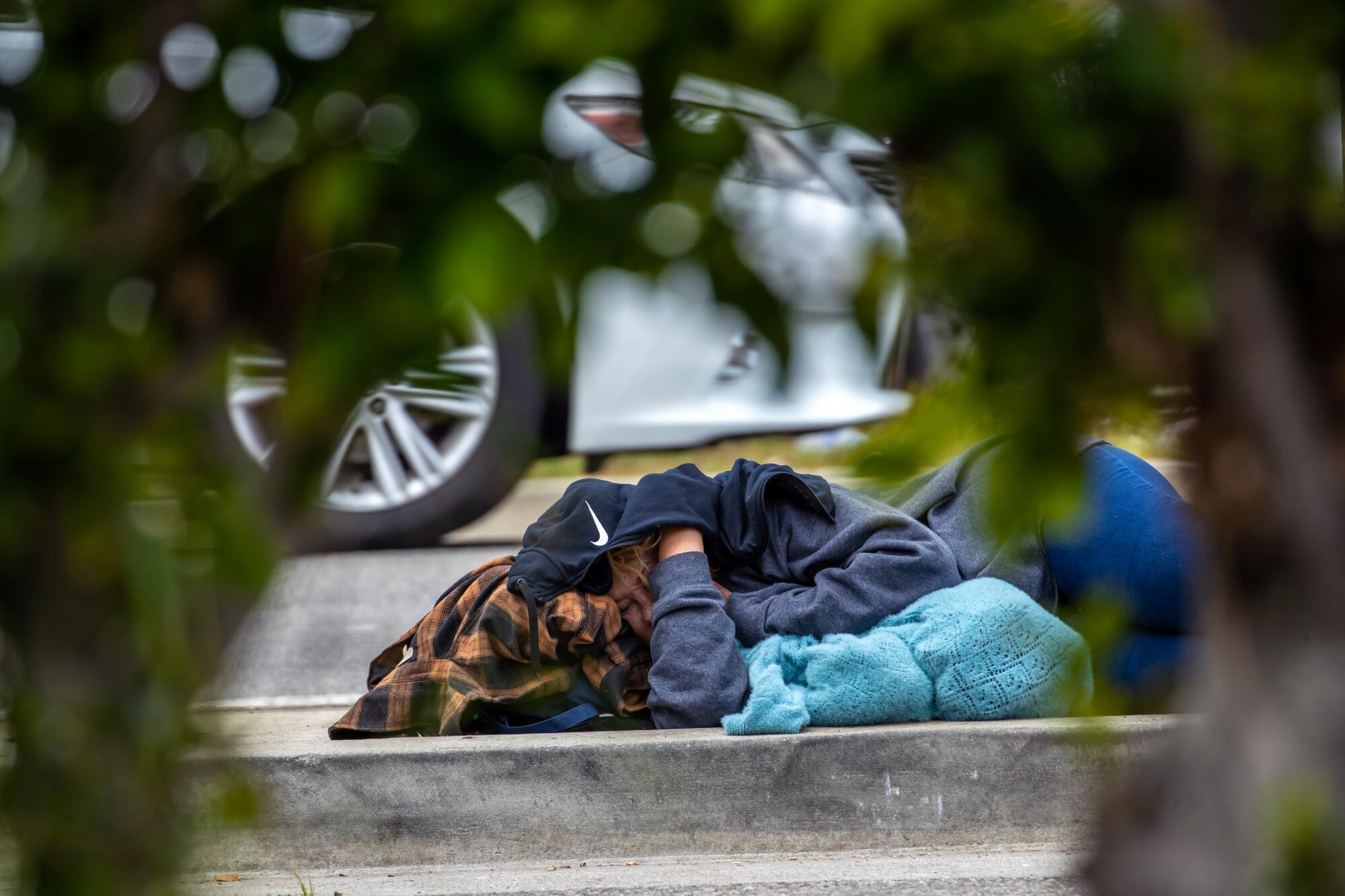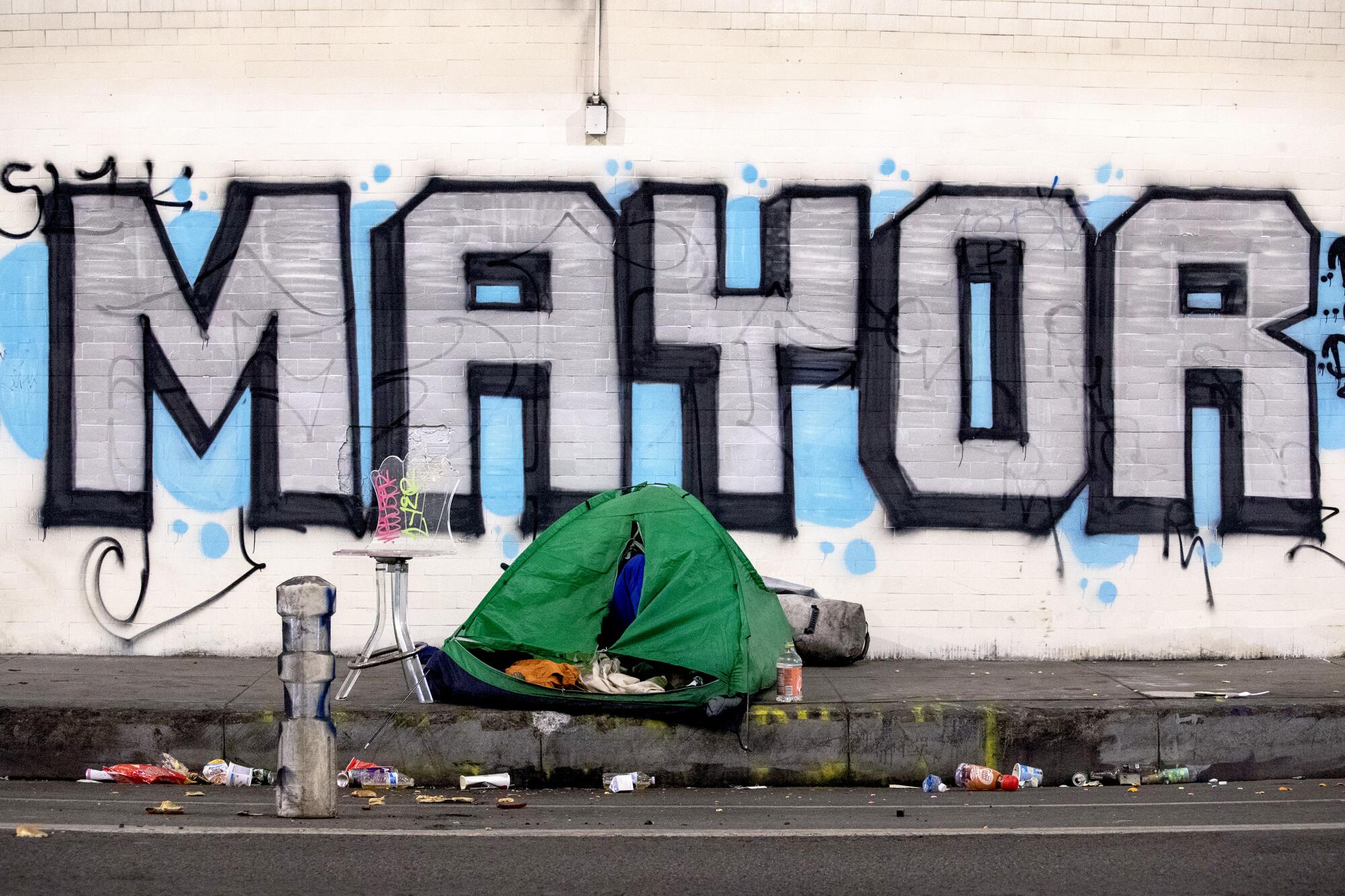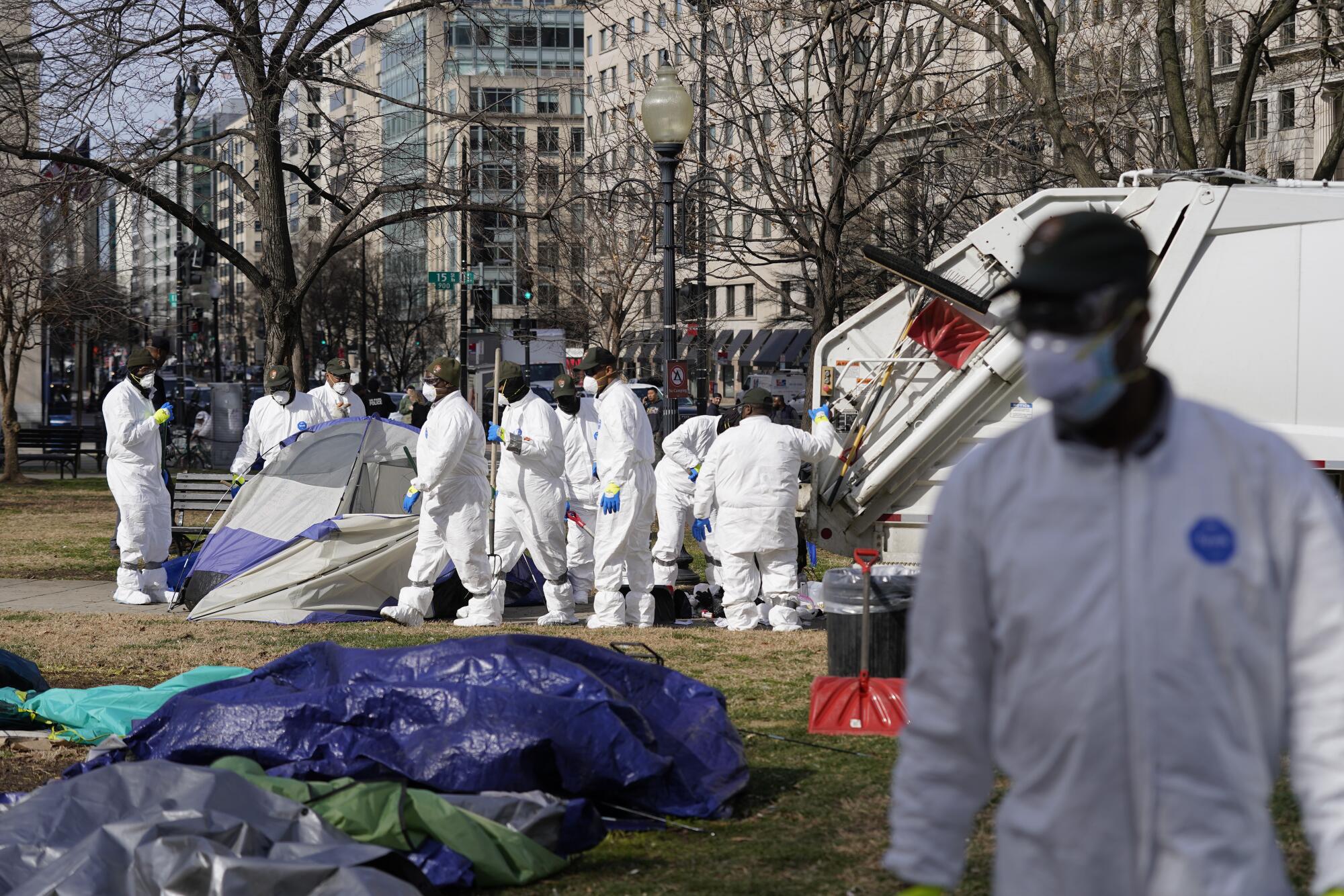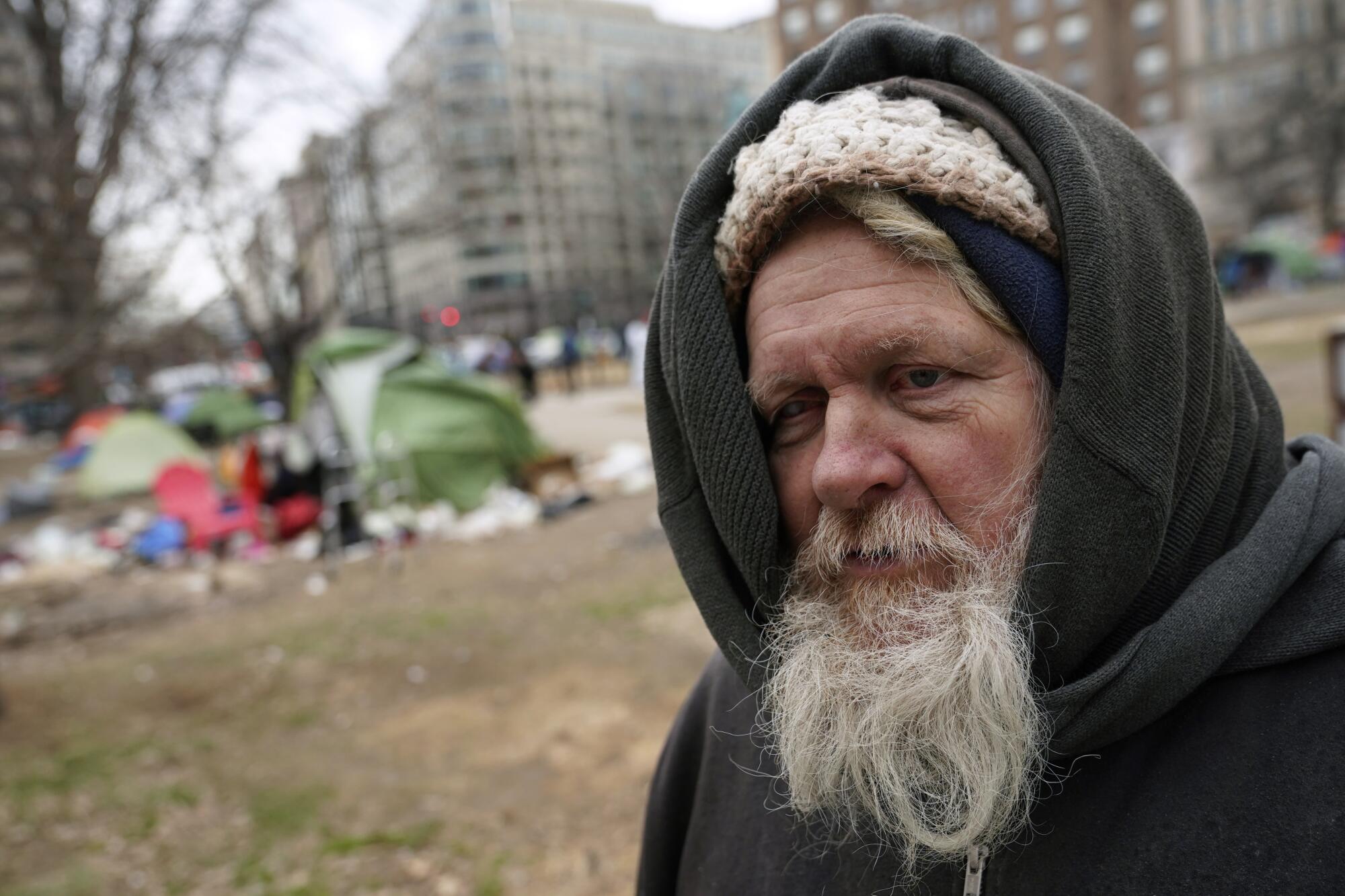
The little-understood reason why clearing homeless encampments became harder in California than most other states
Rulings by the 9th Circuit Court of Appeals have made it harder for officials in California and other Western states to clear encampments. The Supreme Court could take up the issue early next year.
The little-understood reason why clearing homeless encampments became harder in California than most other states

Work crews clean up personal belongings and trash at a homeless encampment under the 405 Freeway in Inglewood.
(Wally Skalij / Los Angeles Times)
BY DAVID G. SAVAGE,
NOAH BIERMAN
DEC. 18, 2023 6:30 AM PT
NOAH BIERMAN
DEC. 18, 2023 6:30 AM PT
WASHINGTON —
Blocks from the White House, McPherson Square is a quiet, grassy downtown park where Washingtonians lunch and pigeons perch atop a statue of a Civil War general killed fighting the Confederacy.
A year ago, it became the city’s largest homeless encampment, covered by tents and virtually off-limits to pedestrians.
Why homelessness looks different in Washington, D.C., than L.A.
Dec. 18, 2023D.C. Mayor Muriel E. Bowser and the National Park Service have strictly enforced laws against camping on sidewalks and in parks. After posting a two-week notice, police fenced off the area and all tents were removed.
Homeless advocates protested and carried signs saying “SHAME” and “STOP THE EVICTIONS.” Two people who refused to leave were handcuffed and taken away. But the fight ended there and today the square remains clear.

A tent and debris can be seen in McPherson Square in Washington, D.C., on Feb. 15, prior to the area being cleared by the National Park Service.
(Patrick Semansky / Associated Press)
It’s a scene that has played out repeatedly across the country as homeless rates surge and public officials grapple with how to address the housing shortage.
It also illustrates a stark difference in the way anti-camping ordinances are being enforced from city to city and state to state.
In cities such as Washington and much of the rest of the nation, officials are relatively free to enforce local laws to remove homeless encampments.
But thanks to a series of rulings by the 9th Circuit Court of Appeals, public officials in California and eight other Western states face greater scrutiny and legal challenges when they move to clear encampments or relocate homeless people — even when the local laws are virtually the same as those used by cities outside the 9th Circuit.
The appellate decisions established new rights for homeless people who need a place to sleep and limited the authority of police to relocate them.
But no other federal appellate court has followed the 9th Circuit’s legal reasoning and now the decisions are being challenged in the Supreme Court, which could take up the issue early next year.
The first 9th Circuit ruling came in 2006, when judges struck down a Los Angeles sidewalk ordinance and ruled that homeless persons could not be arrested solely because they “lie or sleep” on the streets. Rather than appeal to the Supreme Court, the city settled the case and agreed not to enforce its ordinance during overnight hours.

A homeless person sleeps on a sidewalk on San Vicente Boulevard in Beverly Hills.
(Irfan Khan / Los Angeles Times)
Five years ago, the appeals court ruled it was “cruel and unusual punishment” forbidden under the 8th Amendment to arrest or fine people who were sleeping on the street in Boise, Idaho, because they had nowhere else to go.
In a follow-up ruling last year, the appeals court struck down an anti-camping ordinance in Grants Pass, Ore., because the city did not offer alternative shelter to all those being displaced.
Together the rulings have created two different legal standards for dealing with homeless people and homeless encampments in this country.
“Most local governments throughout the country can remove encampments that are blocking sidewalks and the right of way,” said Amanda Karras, general counsel of the International Municipal Lawyers Assn. But on the West Coast, the 9th Circuit rulings “create a significant amount of uncertainty for local officials over what is legally permissible” when confronting homeless encampments, she said.
To a considerable degree, the rulings “have taken the power to address homelessness out of their hands,” Karras said.
Unlike in Washington, city officials in California know they may face lawsuits for violating the rights of homeless people.
Last December, a federal judge — citing the 9th Circuit — blocked San Francisco’s plan to remove encampments on the sidewalks because the city had not first offered “adequate shelter” to all who were homeless.
The city’s lawyers argued more than half of those living on the sidewalk refused offers of shelter.

A homeless person sleeps in a tent on a sidewalk in downtown Los Angeles in March.
(Brian van der Brug / Los Angeles Times)
But lawyers say it remains unclear whether the city or police in California may remove an encampment from the sidewalk if a homeless person refuses an offer of shelter.
The city of Los Angeles and California Gov. Gavin Newsom joined two dozen others in September to urge the Supreme Court to hear an appeal of the Grants Pass decision and to clarify the law on sidewalk encampments.
The appeal petition said California is “home to half of the nation’s unsheltered homeless population,” but argued its local officials have less authority than those in most other states.
Los Angeles lawyer Theane Evangelis, who filed the Supreme Court appeal, said homelessness has been made worse by court rulings.
“Los Angeles has been uniquely constrained in its ability to address homelessness” since the settlement of the 2006 ruling on sleeping on sidewalks, she said. The more recent rulings “are now similarly tying the hands of local governments across the Western U.S.”
She pointed out the full 9th Circuit split 14 to 13 on whether to stand behind the decision in the Grants Pass case. The conservative dissenters accused their liberal colleagues of having “paralyzed local communities from addressing the pressing issue of homelessness.”
In a friend-of-the-court brief, Los Angeles City Atty. Hydee Feldstein Soto described the 9th Circuit’s approach as unclear and unworkable.
“Sidewalks currently serve two often incompatible functions: housing tens of thousands of unsheltered residents (and their personal belongings), and also providing access and a right of way for pedestrians, [wheelchair-using] travelers, school children seeking safe passage to and from school, business owners and customers relying on accessible store fronts, and residents seeking to access services from municipal, state, and federal government offices,” she wrote.



